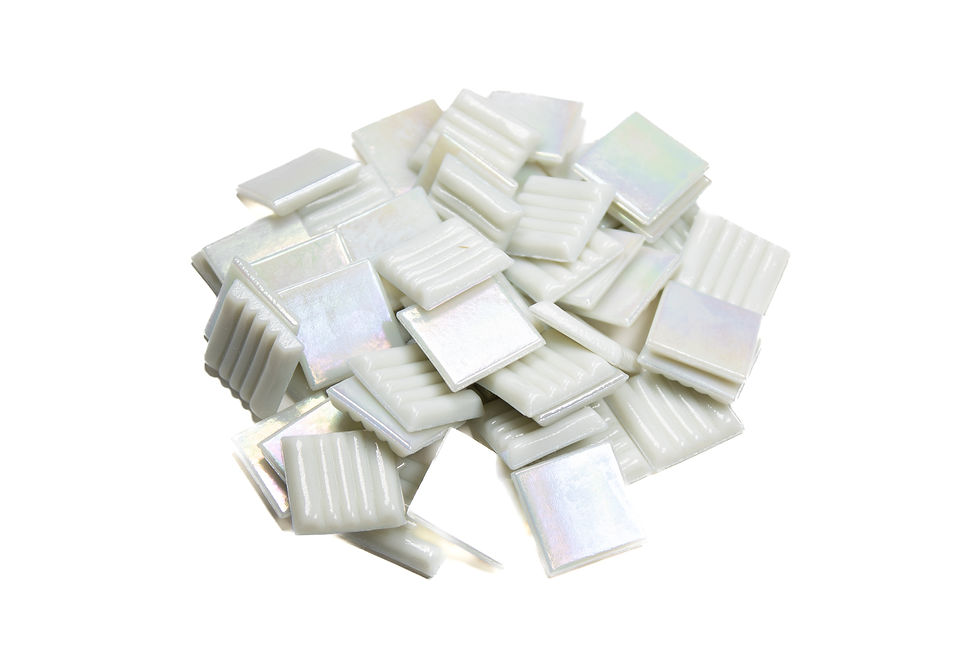top of page
Iridescent glass tiles
Iridescent glass, with its mother-of-pearl or petrol-spill sheens, can make for magical effects in mosaic. The phenomenon of iridescence occurs naturally when glass weathers and its chemical compounds interact with those in its surroundings. The effect, which is often seen on Roman glass which has been buried for centuries, fascinated Louis Comfort Tiffany when he toured the great museums of Europe in the 1860s. He spent several years perfecting and patenting a process that could create iridescence in an industrial setting and released his first 'Favrile' glass in 1894. It caused a sensation, and that peacock sheen still has great appeal today. Modern glass-makers achieve the look either by holding glass in an oxygen-reduced furnace and surrounding it with reactive gases, or by spraying still-hot glass with metallic salts.
If you'd like to see technical data sheets for these tiles, please click here.
bottom of page
























































